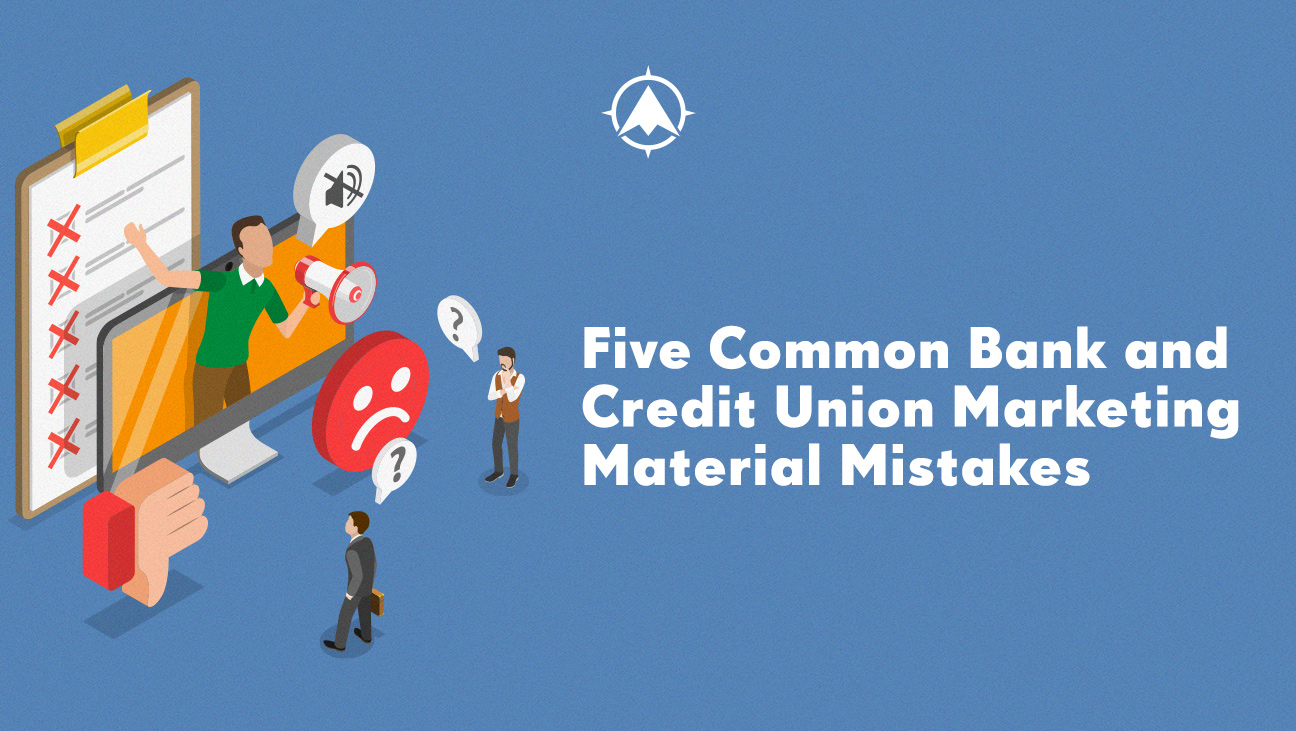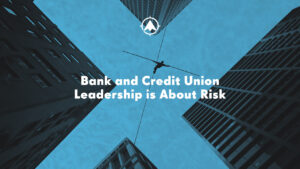Your bank and credit union marketing materials aren’t just posters, signage or digital ads. They are visible signals that tell people about your identity. And although you may produce many types of collateral, consumers won’t see it all. If they were only to see one…what would their impression be?
First impressions count for a lot (94% of them are design-related), so you must get your marketing materials right. You literally can’t afford simple mistakes with so much competition out there.
Let’s go over five marketing material mistakes along with possible solutions.
- It’s created for you. Who is your marketing for? Sometimes, you write it for yourself or board members. And your crew may love it…but do consumers love it? Remember: your marketing is aimed at current and potential consumers. Those folks are different than you, so don’t worry too much if you aren’t always a raving fan. One credit union CEO said recently she disliked a concept presented to her but approved it because she wasn’t the target audience. This is the attitude to have. Don’t accept poor work but understand your target audiences enough to know when your personal preference is trying to take over.
- It’s cold and unfeeling. The emotionless content trap is easy to fall into during the AI age. A busy marketer can have ChatGPT spin something up and throw it onto the content hamster wheel. But using AI this way (without humanizing the results) risks turning away living, breathing consumers. People must feel something when they engage with your marketing materials. In Your Website Sucks, Brian David Hall says to create feelings “out of the hesitation and doubts your visitors arrive with” and that it “feels really nice to have your emotional state acknowledged and validated.” Use emotional language. Make people feel something if you want them on board.
- It doesn’t match your brand. Ok…this one sounds like a “no, duh” tip. Yet, it’s a constant problem for many financial brands – a great organizational identity doesn’t translate to bank or credit union marketing materials. Your brand voice is watered down, your logo is always in a different spot or your colors aren’t present. And what isn’t consistent with your brand won’t tie back to you in people’s minds. Make sure your brand standards are clearly explained and religiously followed.
- It obsesses over technicalities. Following your brand guide doesn’t mean legalistically producing boring branded content. Getting hung up on technical details like word counts hurts more than it helps. Ann Handley says, “Your reader will love a 2,000-word email newsletter if it doesn’t feel like 2,000 words – if it feels instead like a fun, useful inbox romp.” Focus on providing value; focus on showing the benefits. Stay in the brand ballpark without locking yourself in content prison.
- It looks amateurish (by accident). Fair or not, you are competing against any other company with a brand presence (so basically all of them). Consumers expect the same high quality everywhere. Prioritize professional design and get help from an expert team if needed. One note: amateur design is acceptable if it’s a purposeful choice. Surreal Cereal purposely did poorly designed billboards as a joke for its January campaign. Just make sure it’s an obvious joke so people don’t think you’re inexperienced.
Hopefully these tips help you dodge marketing collateral catastrophes. But sometimes it’s hard to see these mistakes in your own materials. Book a free consultation with us and get a bank or credit union marketing assessment to quickly identify ways to improve.







